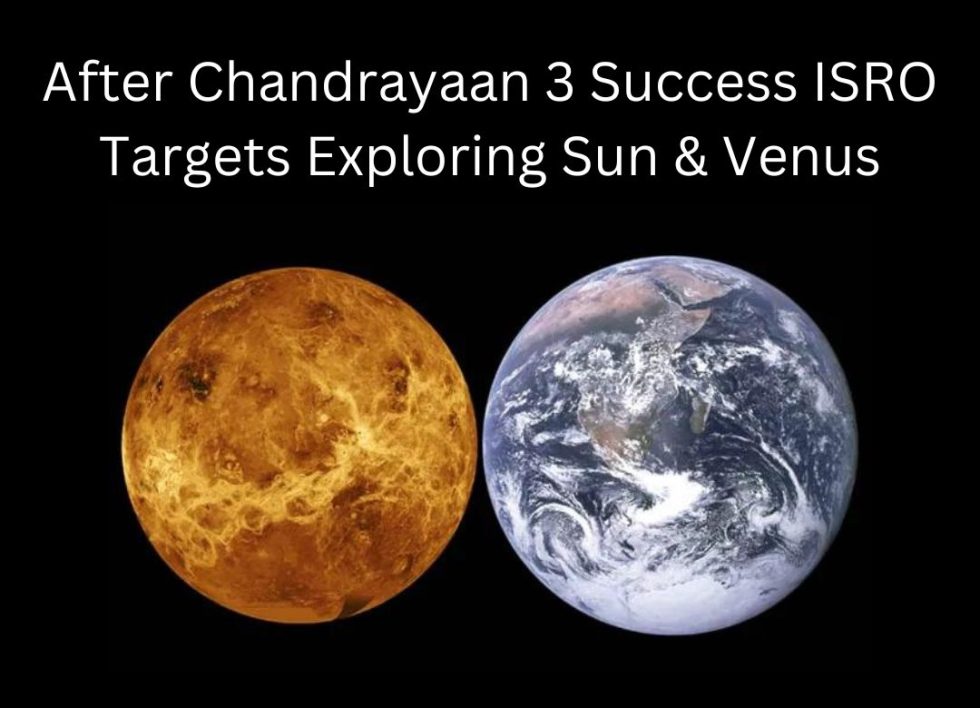
The successful soft landing of Chandrayaan-3’s Vikram lander module on the lunar surface marks a giant leap for India’s ambitious space program. As Prime Minister Narendra Modi announced to a cheering crowd, the nation has proven its technological and scientific prowess by becoming only the fourth country to successfully land a craft on the Moon. But India has no plans to rest on its laurels. Modi hinted at even bolder missions to come that will aim higher – literally and figuratively. India now has its sights set on exploring the mysteries of the Sun and venturing to Earth’s hellish twin, Venus.
After overcoming immense challenges to reach the Moon, India’s space agency has demonstrated the talent, skill and determination to take on such daunting celestial targets. The future is bright for India’s space explorers as the nation seeks to push the boundaries of human knowledge about our solar system and place itself among the world’s spacefaring elite. Strap in – India’s space odyssey is just getting started.
Modi Lauds ISRO Scientists for Achievement and Sets Sights on Future Missions
As India successfully landed its Chandrayaan-3 lunar lander module Vikram on the lunar surface, Prime Minister Narendra Modi lauded the Indian Space Research Organization (ISRO) for this historic achievement. At the same time, he announced that India has set even more ambitious targets for future space missions.
Exploring the Sun and Venus
Modi hinted at preparations underway for missions to explore the Sun as well as Venus. Sending probes to study the Sun, known as the Parker Solar Probe and Solar Orbiter missions, would provide insights into solar wind and solar flares that impact technology on Earth. A mission to Venus could study its atmospheric composition and surface conditions to better understand Earth’s sister planet.
Continuing Lunar Exploration
Building on the success of Chandrayaan-3, ISRO reportedly aims to launch Chandrayaan-4 in 2024 to explore the dark side of the Moon and potentially extract water ice. Modi noted that India seeks to enhance its knowledge about the origin and evolution of the Moon through continued lunar exploration.
Mars and Beyond
After successfully orbiting Mars with its Mars Orbiter Mission (MOM) in 2013, ISRO aims to land an unmanned rover on Mars as early as 2021. Looking even further, missions to explore asteroids and conduct space-based astronomical observations are on the horizon. India’s ambitious targets show its emergence as a leader in space exploration and its desire to push the frontiers of human knowledge about our solar system and beyond.
With cutting-edge space missions in the works, ISRO continues to make remarkable progress and help India ascend to new heights. The future remains bright for India’s space program under Modi’s guidance and support.
Exploring the Possibilities: India Looks to Send Probes to Study the Sun
India has set its sights on ambitious new space exploration missions, including studying the Sun and Venus.
Exploring the Sun
India aims to launch the Aditya-L1 satellite in 2021 to study the Sun’s corona and solar winds. Aditya-L1 will be placed in halo orbit around the Sun-Earth Lagrange point 1, providing a unique vantage point to observe the Sun. The data and insights gained can help scientists better understand space weather and solar eruptions that impact technology on Earth and in space.
Studying the dynamics of the Sun is crucial to unravelling mysteries surrounding phenomena like coronal mass ejections, solar flares and solar wind acceleration. Aditya-L1 will carry seven payloads to study the Sun’s magnetic field, solar wind, solar corona and more. The mission will provide important insights into the origin of solar storms and space weather forecasting.
Exploring Venus
India also seeks to explore Venus, launching an orbiter mission as early as 2023. Little is known about Earth’s twin planet due to its inhospitable surface conditions. India aims to gain a better understanding of Venus’ atmosphere and surface properties. The mission may search for signs of active volcanoes on Venus as well as understand the reasons behind Venus’ runaway greenhouse effect to gain insights applicable to climate change on Earth.
Studying Venus can yield valuable information to better understand planetary evolution and habitability. Unlocking the mysteries of Venus’ extreme climate and surface conditions can provide lessons for Earth as we seek to curb anthropogenic climate change. India’s ambitious push into deeper space exploration will advance our knowledge of the solar system and beyond. The nation is poised to join an elite club of spacefaring countries exploring the farthest reaches of the cosmos.
Conclusion
India’s successful landing of Chandrayaan-3’s Vikram lander module marks another milestone in the nation’s space program. With ambitious new targets set by Prime Minister Modi to explore the Sun and Venus, India’s space agency appears poised to reach new heights. The success of Chandrayaan-3 proves India has the technological and scientific capabilities to undertake such challenging deep space missions. By expanding its space program to explore our solar system’s brightest star and Earth’s closest neighbour, India is signalling its intent to become a leader in space exploration.
The next decade may see India embark on daring solar and interplanetary missions that expand our knowledge of the cosmos and inspire the next generation of scientists and engineers. India’s space ambitions know no bounds.









